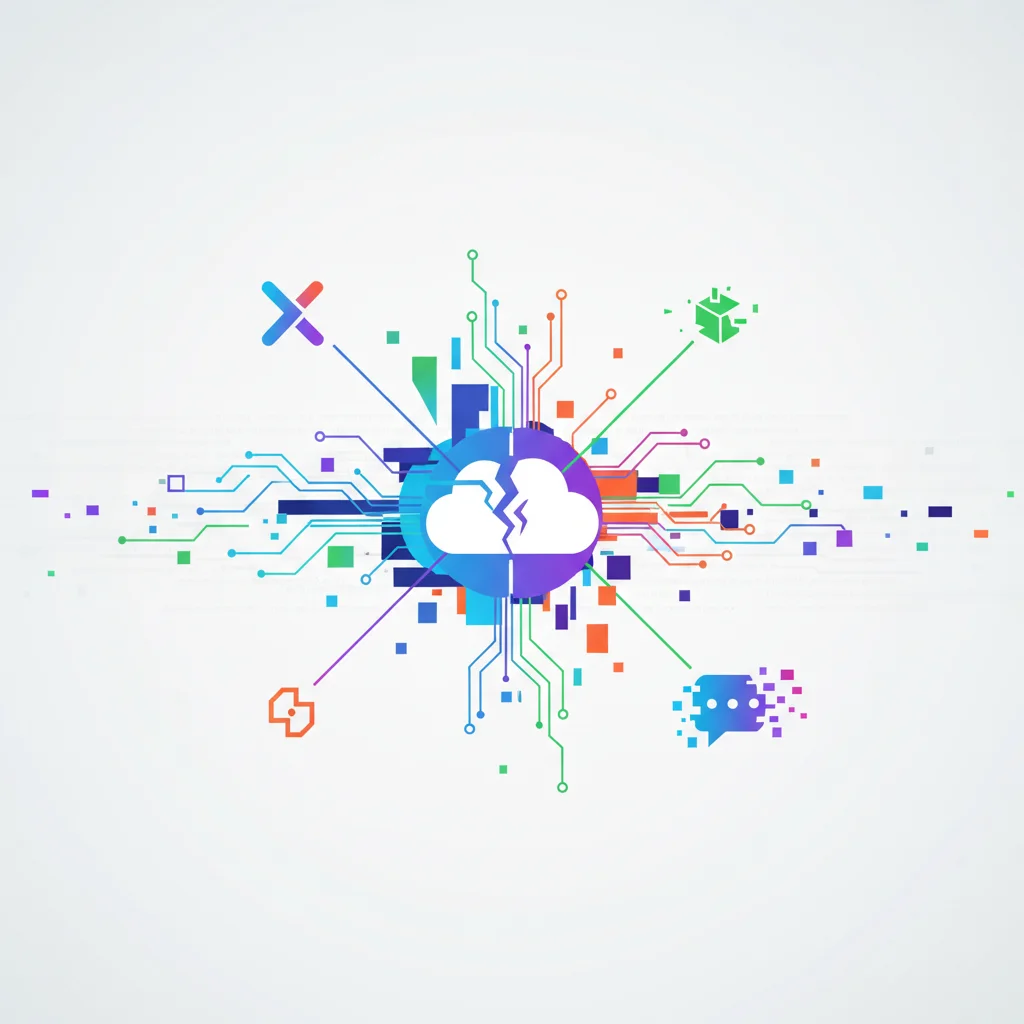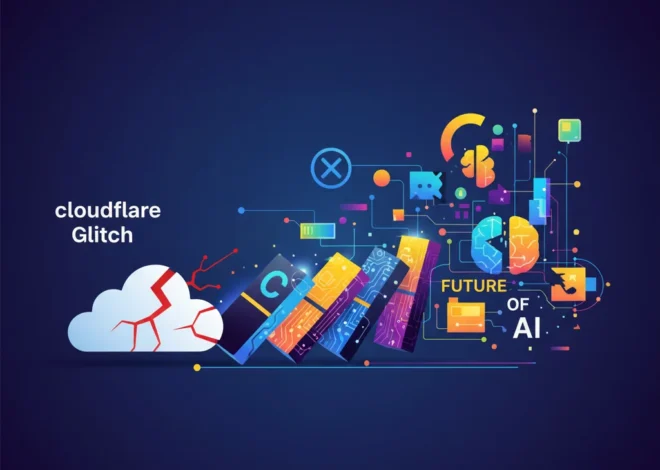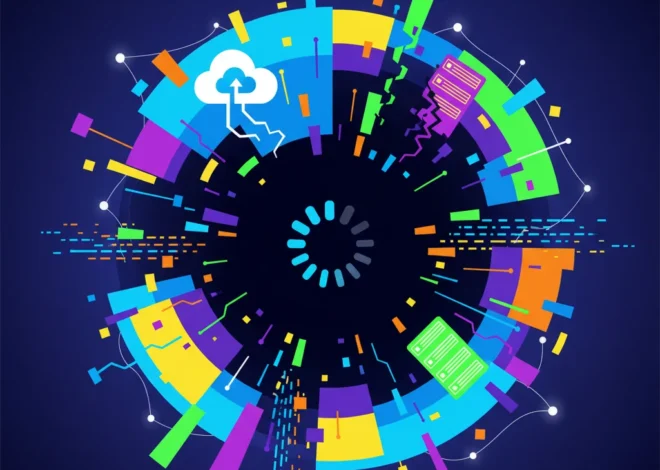
The Day the Internet Stood Still: Deconstructing the Cloudflare Outage That Silenced X and ChatGPT
It was a Tuesday like any other. You might have been debugging a line of code, asking ChatGPT for a creative spark, or simply scrolling through the latest news on X (formerly Twitter). Then, suddenly, nothing. Error messages bloomed where content should have been. For a moment, a significant corner of the digital world went dark. You weren’t alone, and your Wi-Fi wasn’t the problem. The culprit was a hiccup at Cloudflare, one of the internet’s most critical, yet often invisible, giants.
On June 4, 2024, a major service disruption at Cloudflare triggered a domino effect, taking down a host of popular platforms, including the social media behemoth X and the revolutionary AI chatbot, ChatGPT. The company quickly acknowledged the issue, stating it was “working to understand the full impact of a problem which potentially ‘impacts multiple customers,’” according to the BBC. While service was restored relatively quickly, the event served as a powerful, and perhaps unsettling, reminder of the modern internet’s inherent fragility and our profound dependence on a handful of key infrastructure providers.
This wasn’t just another tech glitch. It was a stress test of our digital ecosystem, revealing deep-seated vulnerabilities in the way we build and consume software. From startups to developers, this outage holds critical lessons about resilience, the true cost of convenience, and the future of cloud-based innovation.
What is Cloudflare, and Why Did It Break the Internet?
For many, the name Cloudflare might not ring a bell, but it’s a foundational pillar of the modern web. Think of it as the internet’s traffic cop, security guard, and express delivery service all rolled into one. Cloudflare provides essential services that most major websites and applications rely on:
- Content Delivery Network (CDN): It caches website content on servers around the globe, so when you visit a site, the data travels a shorter distance, making it load faster.
- DNS Services: It translates human-readable domain names (like yourfavorite.com) into computer-readable IP addresses, acting as the internet’s phonebook.
– DDoS Protection: It acts as a shield, absorbing malicious traffic from Distributed Denial of Service (DDoS) attacks that aim to overwhelm and crash websites. This is a cornerstone of modern cybersecurity.
When a company that handles a massive percentage of the world’s internet traffic has a problem, the ripple effects are immediate and widespread. The June 4th outage wasn’t caused by a malicious attack but by a more mundane, yet equally disruptive, issue. Cloudflare later explained in a detailed post-mortem that the problem stemmed from a third-party transit provider, which caused a significant portion of their network to become unavailable. This led to a “significant loss of network capacity in some locations,” as detailed on their official blog.
Essentially, one of the major highways Cloudflare uses to route internet traffic was suddenly closed, causing a massive traffic jam that prevented users from reaching their destinations, like X and ChatGPT. This highlights how interconnected the entire cloud infrastructure is, where a single point of failure outside of a company’s direct control can have catastrophic consequences.
The Chip War's New Frontline: Why a Dutch Power Play Could Reshape Global Tech
The Collateral Damage: A Roster of Disruption
While X and ChatGPT grabbed the headlines, they were far from the only victims. The outage created a cascade of failures across various sectors, impacting communication, productivity, and entertainment. The spike in outage reports was clearly visible on platforms like Downdetector, which showed tens of thousands of users simultaneously reporting issues for numerous services (source).
The table below provides a snapshot of some of the services affected and the kind of impact users and developers experienced.
| Service/Platform | Primary Function | Impact of Outage |
|---|---|---|
| X (Twitter) | Social Media & News | Widespread inability to load feeds, post, or access the platform. |
| ChatGPT | Artificial Intelligence Chatbot | Service unavailable, disrupting workflows for developers, writers, and students. |
| Discord | Communication & Community | Users reported connection issues and failures in sending/receiving messages. |
| Various SaaS Platforms | Business & Productivity Software | APIs failed, dashboards were inaccessible, and core functionalities were broken. |
| E-commerce Sites | Online Retail | Slow loading times and checkout failures, leading to potential revenue loss. |
For startups and entrepreneurs, this was a stark reminder of the risks of relying on a single stack of third-party services. When your entire customer support system, development pipeline, and marketing platform depend on APIs that suddenly go silent, your business effectively grinds to a halt. For developers, it was a lesson in defensive programming—building applications that can gracefully handle the failure of an external service is no longer an edge case, but a core requirement.
The AI Awakening: When Your Smartest Tool Goes Silent
The inclusion of ChatGPT in the list of casualties makes this outage feel fundamentally different from those of the past. Five years ago, a CDN outage was an inconvenience. Today, it can cripple the advanced AI and machine learning tools that are rapidly becoming integrated into our daily workflows.
This incident underscores a critical point: for all its futuristic capabilities, artificial intelligence is still delivered through the same pipes and protocols as a simple blog. The sophisticated models powering ChatGPT run on massive cloud infrastructure and are accessed via APIs, making them just as vulnerable to network issues as any other SaaS product. The outage demonstrated that:
- AI is a Dependency: For many developers, marketers, and creators, AI is no longer a novelty but a mission-critical tool for coding, content generation, and data analysis. Its absence is not just an inconvenience; it’s a productivity killer.
- The AI Stack is Fragile: The complex chain of services required to deliver an AI response—from the user’s browser to the CDN, to the API gateway, to the GPU clusters running the model—has multiple potential points of failure.
- Automation Relies on Availability: As businesses integrate AI-powered automation into their core processes, the uptime of these AI services becomes paramount. An outage can halt automated customer service, data processing pipelines, and more.
This event should serve as a wake-up call for the AI industry. As we race towards more powerful and integrated AI systems, building infrastructural resilience and redundancy must be a parallel priority. The most brilliant software is useless if no one can access it.
The £5 Billion Bitcoin Heist: How AI and Cybersecurity Are Battling a New Era of Digital Crime
Building a More Resilient Future: Key Takeaways for Tech Leaders
Instead of just waiting for the next outage, proactive businesses and developers can learn from this event to build more robust systems. This isn’t about abandoning powerful platforms like Cloudflare but about architecting for failure.
For Entrepreneurs and Startups:
- Vendor Diversification: While it adds complexity, consider using a secondary DNS provider or exploring a multi-CDN strategy for mission-critical assets. At the very least, understand the dependencies in your tech stack and have a contingency plan.
- Transparent Communication: Have a plan in place for communicating with your customers during a third-party outage. A simple, honest message on a status page or social media can preserve trust when your service is down due to factors beyond your control.
- Understand Your SLAs: Review the Service Level Agreements (SLAs) of your critical vendors. Know what guarantees they offer and what compensation, if any, is available in the event of an outage.
For Developers and Tech Professionals:
- Implement Circuit Breakers: In your code, use patterns like circuit breakers that can detect when an external API is failing and temporarily stop trying to call it, preventing your own application from crashing.
- Graceful Degradation: Design your applications so they can still function in a limited capacity even if a key microservice or third-party API is down. Can a user still access core features even if the AI-powered recommendation engine is offline?
- Improve Monitoring and Alerting: You should be the first to know when a critical dependency is failing. Robust monitoring can help you pinpoint the source of a problem quickly—distinguishing between your own code and a vendor outage—and trigger your incident response plan. As TechCrunch noted, rapid identification is key to mitigation.
Conclusion: The Web’s Unseen Foundation
The great Cloudflare outage of June 2024 was more than a temporary technical glitch; it was a live-fire drill for the entire digital economy. It peeled back the curtain on the internet’s complex and deeply interconnected infrastructure, revealing a system that is simultaneously powerful and precarious. It showed us that the future of AI, the agility of startups, and the daily digital routines of billions are all balanced on a foundation maintained by a surprisingly small number of key players.
The path forward isn’t about fear or abandoning the incredible tools at our disposal. It’s about building with awareness. It’s about designing for resilience, demanding transparency, and recognizing that in our hyper-connected world, the stability of our own software is inextricably linked to the stability of the giants on whose shoulders we all stand.


